Citation:
摘要:
The fine particles serving as cloud condensation nuclei in pristine Amazonian rainforest air consist mostly of secondary organic aerosol. Their origin is enigmatic, however, because new particle formation in the atmosphere is not observed. Here, we show that the growth of organic aerosol particles can be initiated by potassium-salt-rich particles emitted by biota in the rainforest. These particles act as seeds for the condensation of low- or semi-volatile organic compounds from the atmospheric gas phase or multiphase oxidation of isoprene and terpenes. Our findings suggest that the primary emission of biogenic salt particles directly influences the number concentration of cloud condensation nuclei and affects the microphysics of cloud formation and precipitation over the rainforest.
附注:
ISI Document Delivery No.: 996WPTimes Cited: 0Cited Reference Count: 31Poehlker, Christopher Wiedemann, Kenia T. Sinha, Baerbel Shiraiwa, Manabu Gunthe, Sachin S. Smith, Mackenzie Su, Hang Artaxo, Paulo Chen, Qi Cheng, Yafang Elbert, Wolfgang Gilles, Mary K. Kilcoyne, Arthur L. D. Moffet, Ryan C. Weigand, Markus Martin, Scot T. Poeschl, Ulrich Andreae, Meinrat O.Max Planck Society; Max Planck Graduate Center; Geocycles Cluster Mainz (Landesexzellenzcluster Rheinland-Pfalz); European Community (PEGASOS) [FP7-265148]; Office of Science, Office of Basic Energy Sciences (BES), U.S. Department of Energy (DOE) [DE-FG02-08ER6452]; U.S. NSF [0925467]; Office of Science, BES, of the U.S. DOE [DE-AC02-05CH11231]This work has been supported by the Max Planck Society, the Max Planck Graduate Center, the Geocycles Cluster Mainz (Landesexzellenzcluster Rheinland-Pfalz), and the European Community (PEGASOS, FP7-265148). The Harvard Environmental Chamber was supported by the Office of Science, Office of Basic Energy Sciences (BES), U.S. Department of Energy (DOE), grant no. DE-FG02-08ER6452, and the U.S. NSF under grant no. 0925467. The Advanced Light Source is supported by the Director, Office of Science, BES, of the U.S. DOE under contract no. DE-AC02-05CH11231. We thank the Helmholtz-Zentrum Berlin for the allocation of synchrotron radiation beamtime at BESSY II. We thank the Instituto Nacional de Pesquisas da Amazonia (INPA), Manaus, and the ATTO team under the Brazilian coordinator, A. O. Manzi, for their collaboration and field support. We also thank G. R. Carmichael and the Center for Global and Regional Environmental Research at the University of Iowa for support in the Weather Research and Forecasting (WRF) model simulations. We gratefully acknowledge R. Ditz, I. Trebs, X. Chi, J. A. Huffman, J. Kesselmeier, J. Schongart, M. Kuwata, T. Tyliszczak, J. Huth, G. Schutz, E. Goering, M. Bechtel, J.-D. Forster, and T. Behrendt for support and helpful discussions.Amer assoc advancement scienceWashington
